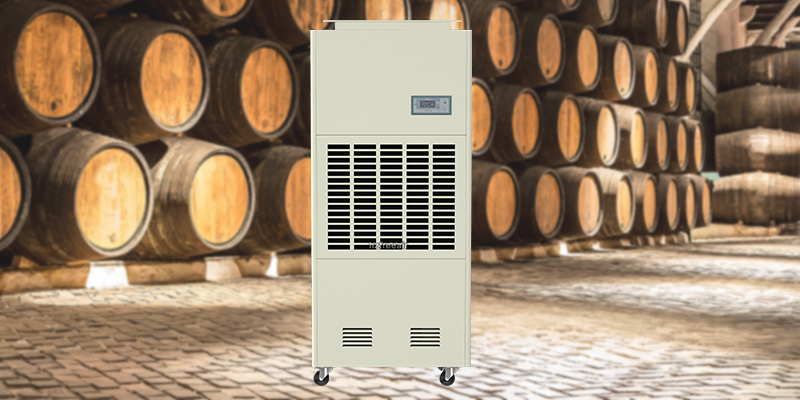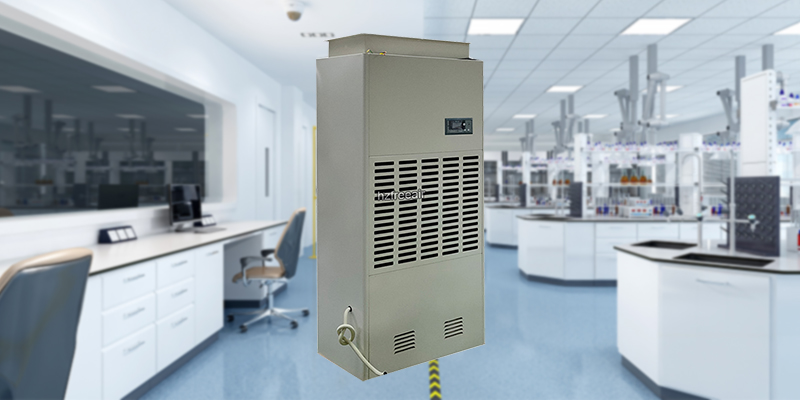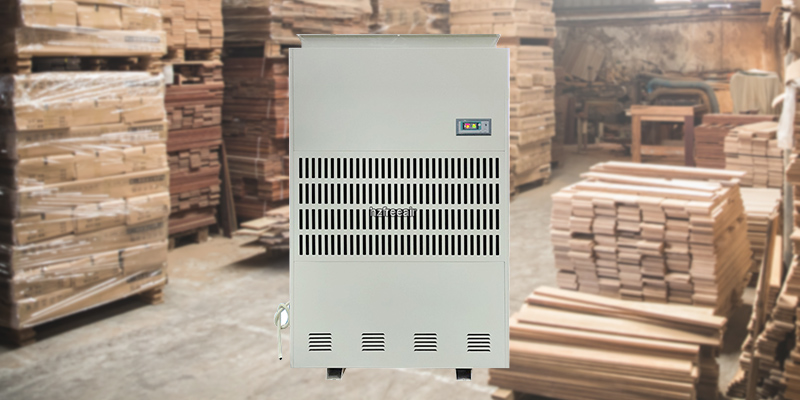


Characteristics of Cellar Rooms and Humidity Control Requirements
Cellar rooms are specialized spaces designed to store items such as precious wood, wine, and artworks that are sensitive to
temperature and humidity. These spaces typically have unique environmental characteristics. They are usually located underground
or semi-underground, and although they can maintain relatively stable temperatures, they also face the challenge of high humidity.
In summer or in tropical regions, the internal temperature of cellar rooms can reach up to 60℃, making ordinary dehumidification equipment ineffective.
The high temperature and high humidity environment in the wooden cellar has a significant impact on the stored items:
Wood storage: A relative humidity exceeding 70% is likely to cause mold and decay; a humidity lower than 50% will lead to cracking and deformation.
Wine aging: The ideal humidity range is 60-75%. Excessive humidity will cause the wine labels to fall off and the cork to mold; too low humidity will result in the cork shrinking.
Art preservation: Fluctuations in humidity can cause irreversible damages such as paper deformation and paint peeling.

Traditional dehumidifiers have significant limitations in high-temperature environments:
The efficiency of ordinary compressors drops sharply above 40℃.
High temperatures cause electronic components to age prematurely.
Poor heat dissipation leads to frequent equipment shutdowns.
Conventional materials are prone to corrosion in high-temperature and high-humidity environments.
The core technical features of the high-temperature dehumidifier
The high-temperature environment dehumidifier specially designed for wine cellars adopts multiple special technologies to ensure stable operation even at 60℃:
High-temperature adaptability design
Uses special compressors with built-in high-temperature protection mechanisms
Optimizes the refrigerant circulation system to enhance efficiency in high-temperature conditions
Strengthened heat dissipation structure, equipped with high-power cooling fans
Key electronic components use industrial-grade high-temperature-resistant models
Intelligent control system
High-precision temperature and humidity sensors monitor environmental changes in real time
Adaptive adjustment of operating parameters to optimize energy efficiency ratio
Multiple safety protections (overload, overheating, anti-freezing, etc.)
Optional remote monitoring and alarm functions
Professional structural design
The outer shell is made of anti-corrosion metal materials or special engineering plastics
The heat exchanger uses hydrophilic coating to enhance heat exchange efficiency
Anti-mold and antibacterial treatment to avoid secondary pollution
Low noise design, suitable for quiet environment requirements
Recommendations for matching application area of wooden cellar rooms
168L/d model: 80 - 120㎡ (standard cellar room with a height of 3 meters)
300L/d model: 150 - 220㎡
600L/d model: 300 - 450㎡
1200L/d model: 600 - 900㎡

Professional Installation Requirements
Equipment spacing: Maintain a minimum of 1 meter for maintenance passage
Air duct configuration: It is recommended to use 304 stainless steel ducts
Drainage system: Standard equipped with an automatic drainage pump (with a lift height of 5 meters)
Power supply connection: Independent circuit breaker + leakage protection
Industry Application Cases
This series of high-temperature dehumidifiers are particularly suitable for:
Precious wood storage cellars (such as rosewood and sandalwood)
High-end wine aging cellars
Traditional fermentation pits
Museum artifact humidity-controlled storage
Special materials preservation in laboratories

The equipment is produced through a non-standard customized production mode. It can provide targeted
solutions based on the specific cellar structure and the characteristics of the stored items, including:
Multi-machine linkage control system
Zone humidity management plan
Emergency backup power interface
Special anti-corrosion treatment (for seaside and high-salt environments)